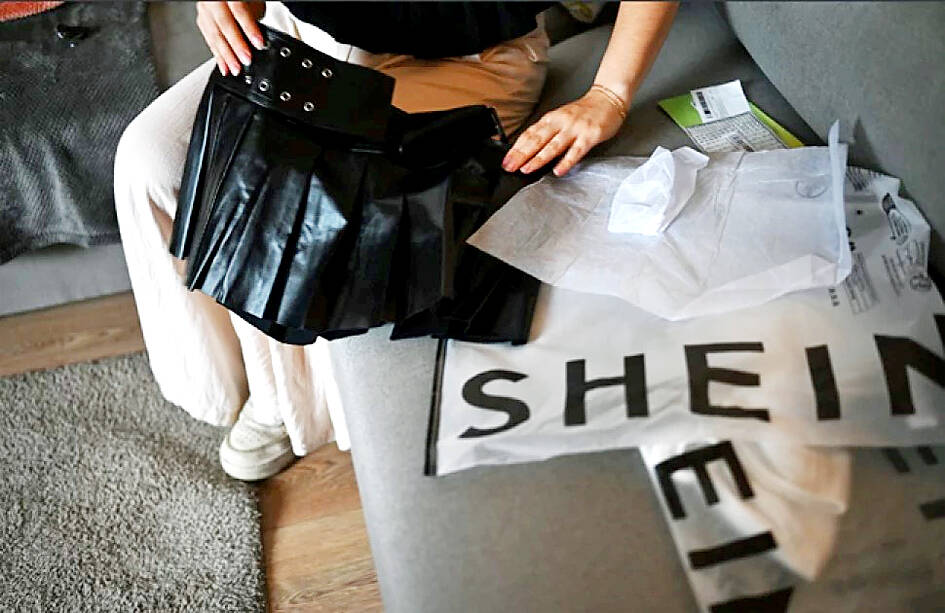From sizing advice via selfies to robot stock-takers, online shopping behemoths have increasingly turned to artificial intelligence (AI) in a bid to stem the flow of bad-for-business clothes returns.
Up to 30 percent of fashion items bought on the Internet are sent back, according to study late last year by consulting firm McKinsey and the Business of Fashion Web site — not least because “clients are buying several sizes or styles and returning most of them.”
That practice drags down profit margins. Each returned package costs between US$21 and US$46 on average given the costs of transport, treatment and making the item fit for selling again, a separate McKinsey study said.
Photo: AFP
SIZING ISSUE
“Seventy percent of returns are linked to a sizing issue,” said Zoe Tournant, whose company Fringuant markets an AI-driven algorithm to fix that, charging clients between 5,000 to 100,000 euros (US$5,240 to US$105,000) a year.
Armed with the customer’s height, weight and a quick selfie taken on the phone, the French-based start-up promises shoppers a better idea of what size would fit them best.
“With the selfie we detect their age, gender” to help “refine” the image of the customer’s body fed into its AI model, trained for a year on thousands of photos, Tournant said.
Within seconds, that model is then matched up with the garment’s dimensions provided by the brand to tell shoppers whether a jumper “falls perfectly on the shoulder” or if there are “doubts at the level of the hips” for a pair of trousers.
Tournant said her firm has about 20 clients, including upmarket womenswear label Maje, which she claimed has seen a dramatic drop in returns.
Similarly tempted by AI’s promise, Zalando acquired Swiss start-up Fision in 2020, one of a raft of companies working in the size-prediction niche.
Since July 2023, the German heavyweight retailer has adopted its own AI-driven sizing tool where customers help avoid returns “by taking two photos of themselves with their phone while wearing tight-fitting clothes,” Zalando said.
SHIPPING ERRORS
Besides sizing, e-commerce firms are also counting on AI to help avoid returns caused by shipping errors and automate their stock counts.
At ID Logistics, which operates in 18 countries, the order pickers’ trolleys are equipped with a smart camera to check that the color or size of the product retrieved from the shelves matches the order.
The device immediately alerts the worker if they have picked up the wrong item.
In less than two years, this camera has “reduced by 90 percent” the number of incorrect parcels, ID Logistics director of development and innovation Ludovic Lamaud said.
Elsewhere in the warehouse, an independent robot “rammed with AI” likewise maps the premises to “update the stock according to what it sees,” processing “6,000 to 30,000 pallets a night.”
“The right stock prevents preparation errors and therefore returns,” Lamaud said.

